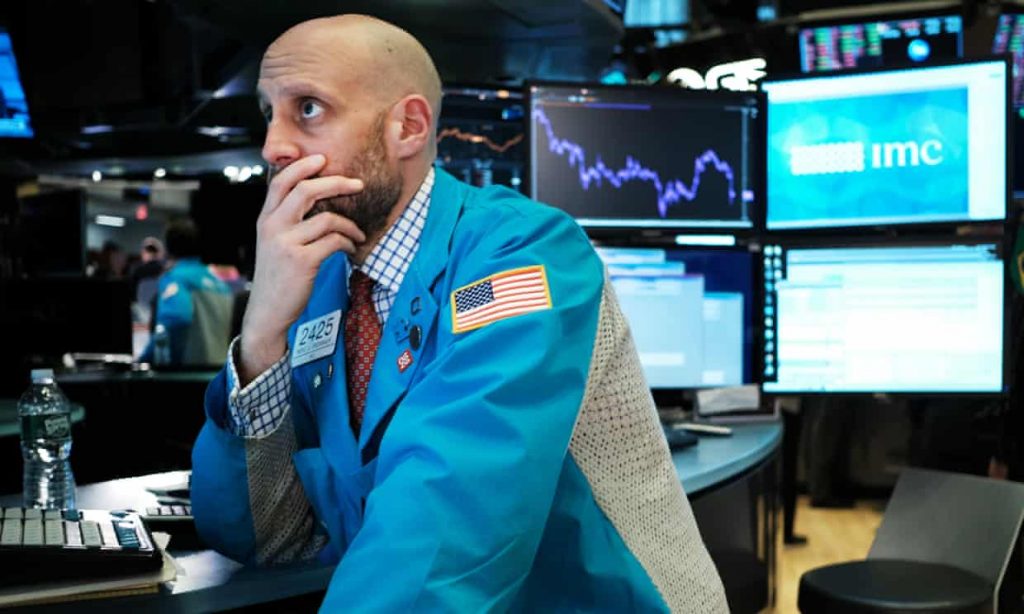
- ARAB NEWS
- 18 Jul 2025

For those who believe financial markets are completely divorced from economic reality, the past few weeks have thrown up some conclusive proof for their case.
Just a couple of examples illustrate the point. Deutsche Bank has published a survey of the US jobs market showing that over the past four weeks, some 25 million jobs were lost in America as the pandemic-ravaged economy ground to a halt. That is more than have been created since the end of the global financial crisis in 2009.
Another example: Goldman Sachs has calculated that the world’s developed economies — the US, Europe and Japan — will shrink by as much as 35 percent in the current quarter compared to the first three months of the year, which were not exactly buoyant anyway. That is four times the previous record set for economic contraction during the global financial crisis.
Against the background of these figures — cataclysmic by any normal economic standards — the financial markets have been quixotic. The S&P Index, the Wall Street benchmark, last month suffered its biggest one-day fall in more than three decades, in a period of almost consistent declines.
Then, towards the end of the month, the index roared ahead again, with three consecutive days of big rises after the US Congress launched its financial “bazooka” in the form of a $2 trillion support package. President Donald Trump, who lives and breathes by the stock indices, was able to proclaim another triumph.
The S&P is still well off the exuberant levels of mid-February, which was the apex of the Trump bull run, but at least the downward plummet has been halted. Goldman Sachs, the same bank that came out with those awful economic statistics, recently said that stocks were unlikely to go any further, partly because of the “do what it takes” attitude of the Trump administration and Congress.
Goldman’s other reason for some optimism was that the virus curves were beginning to flatten out in some parts of the world, and more economic policymakers — not least Trump — were beginning to talk about when they might hope to open up their economies. The prospect of a complete economic collapse was “precluded,” Goldman said.
Others pointed to flaws in both arguments. Having fired the big bazooka, the US authorities have little ammunition left to counter a second financial market threat, perhaps from the ballooning market in corporate debt, or some other aspect of the shadow-banking system.
The truly frightening historical perspective comes on calculating when shares finally recovered to pre-Black Monday levels. It was not until 1955, one economic great depression and one world war later.
Frank Kane
While there have been some encouraging signs that the pandemic is starting to level out, especially in Asia and some European countries, there are huge parts of the world — India, Africa, South America — where there is no or insufficient evidence to make such a call. Large swathes of the global economy could be affected for many months to come.
For financial markets, there is a more immediate danger: Corporate profits for the first half of the year will be catastrophic. Many companies have just gone through the worst quarter of their existence, and profits will be non-existent.
Equity markets still pay great attention to the “price-earnings ratio” which values the shares according to a multiple of the earnings per share. It will be mathematically impossible to determine this when there is no “earnings” value to compute.
Stock markets may comfort themselves by looking to the future, in the hope of a sharp V-shaped recovery towards the end of the year.
But if they look to the past, the perspective is much scarier. In 1929, in the Great Crash — which some experts believe is a more accurate model for our current predicament than the 2008 crisis — shares crashed famously on Black Monday. But they continued falling for another two years, despite lots of little upward blips along the way. The final bottom was not reached until 1932.
The truly frightening historical perspective comes on calculating when shares finally recovered to pre-Black Monday levels. It was not until 1955, one economic great depression and one world war later.
Frank Kane is an award-winning business journalist based in Dubai. Twitter: @frankkanedubai